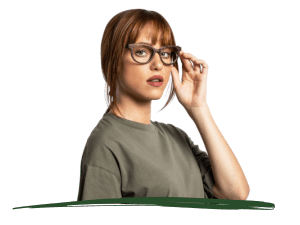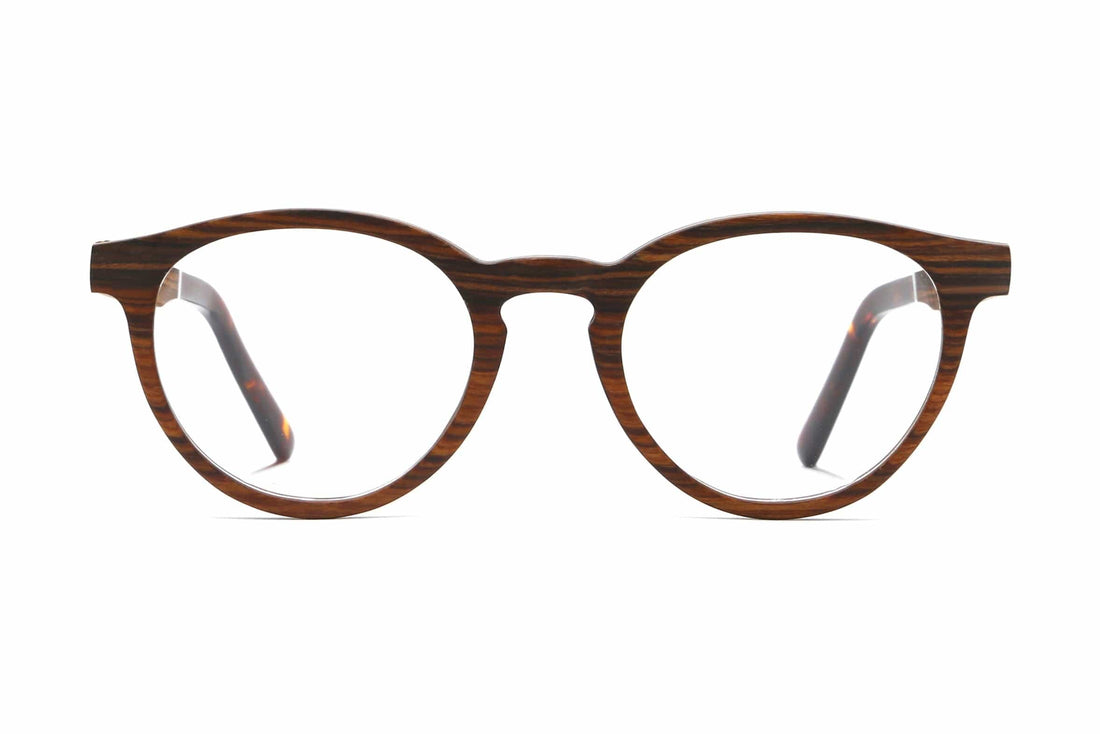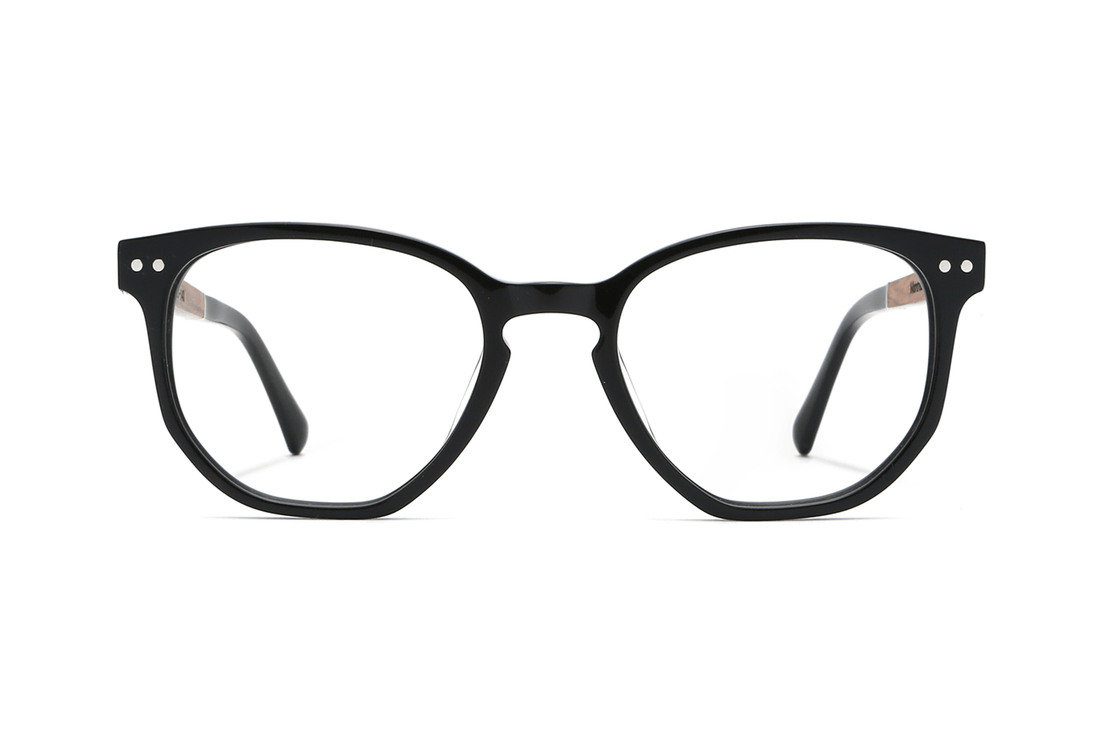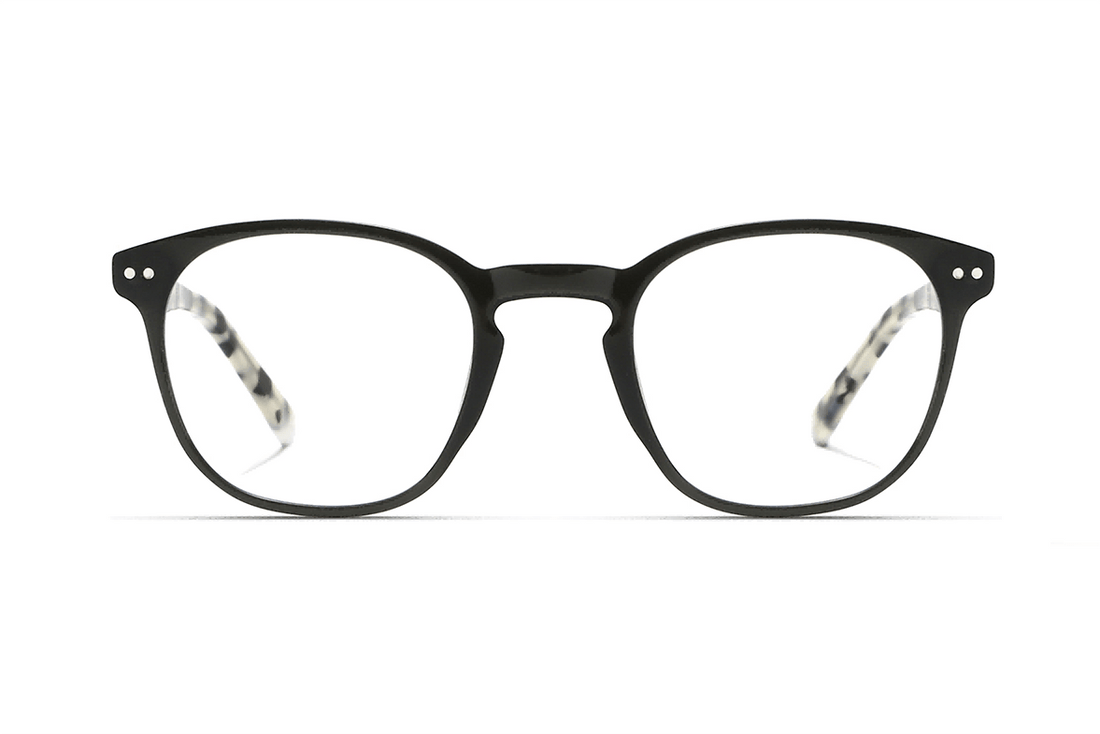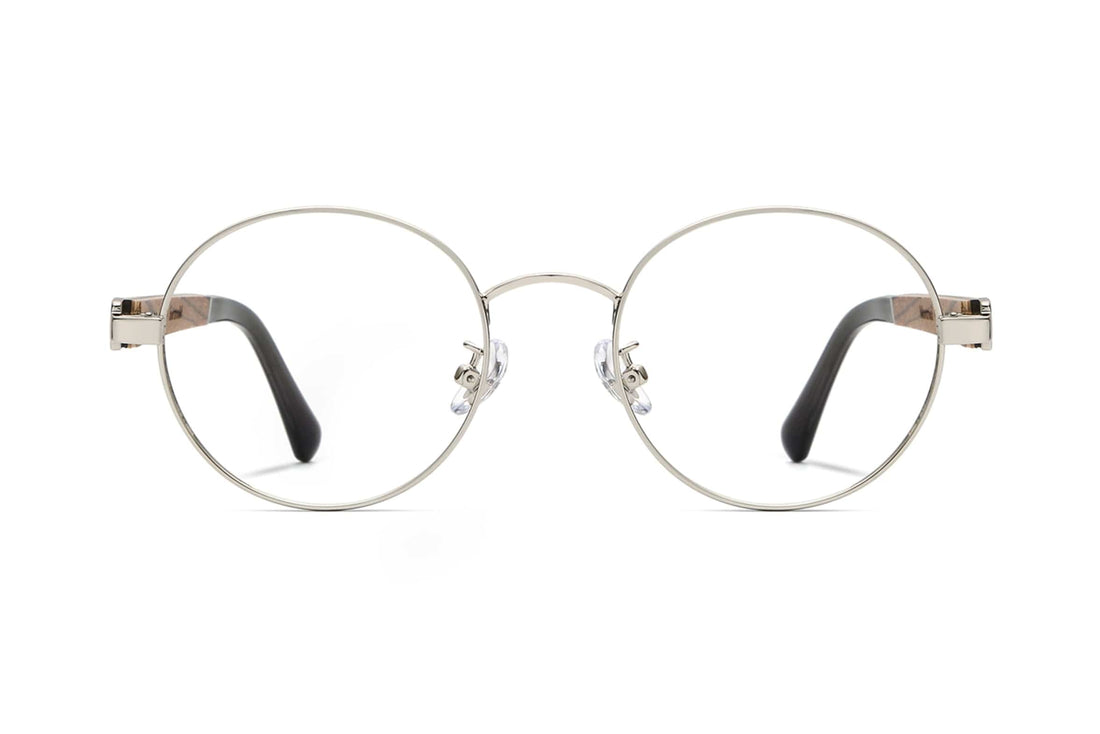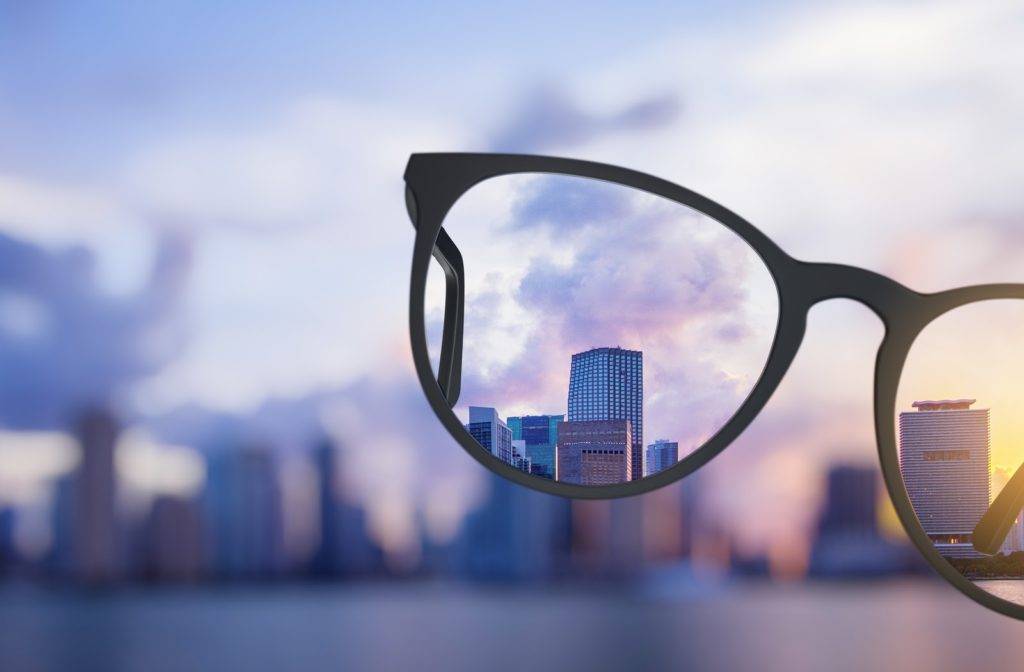
What is a Diopter? Roadmap to Clearer Vision
What is a Diopter?
8 min read • Posted on 10 February 2025
Do you ever open your eyeglass prescription and wonder, "What is a diopter?" You’re not alone. A diopter is a seemingly ordinary term that holds the key to clearer vision. It’s the unit used to measure the strength of your lenses, ensuring your eyes receive the correct focus to see the world clearly.
Understanding diopters can demystify your prescription, helping you feel more confident and informed when choosing the right prescription glasses. Ready to explore the fascinating world of diopters and how they impact your vision? Let’s dive in!
Introduction to Diopters
You're not alone if you’ve ever looked at your prescription and wondered what those numbers mean. One term you're likely to encounter is "diopter," which is more important than it might seem. Diopters measure how your lenses adjust the way light reaches your eyes, helping you see the world more clearly.
Think of diopters as the language your eye doctor uses to fine-tune your vision. They’re the units of measurement that determine the strength of your lenses—whether you need help seeing distant road signs or reading close-up text. Diopters are your key to understanding your prescription and making informed decisions about your eyewear.
A diopter is a unit that measures the refractive power of a lens or an optical system, describing how effectively it bends light to focus an image on the retina. It is calculated as the reciprocal of the focal length in meters (1/focal length in meters).
Lenses with higher diopter values, such as +5.00 or +10.00, have greater focusing power and bend light more sharply. This measurement is essential for designing vision-correcting tools like glasses or contact lenses, which help address imperfections in the eye's ability to focus light accurately. For instance, lenses with higher diopter values are typically prescribed for individuals with more significant refractive errors, such as severe nearsightedness or farsightedness.
What Do Diopters Mean in Visual Correction?
The higher the diopter value, the more effectively a lens can address significant vision problems.
Diopters are the foundation of everything from simple reading glasses to advanced progressive lenses. Without diopters, opticians wouldn’t be able to customize lenses to meet your specific visual needs. Whether your prescription is -2.50 or +1.75, it’s the diopters at work that bring the world into clear focus.
Lenses with positive diopter values, such as convex lenses, are used to correct farsightedness and magnify objects. These lenses bend light toward a focal point, enhancing their magnifying power. For example, magnifying glasses use positive diopters to enlarge objects for clearer viewing.
In contrast, a lens with a diopter value of zero—similar to a flat pane of glass—neither converges nor diverges light. Diopters are crucial not only in vision correction but also in determining the strength of lenses used in devices like cameras, microscopes, and telescopes. This universal unit of measurement ensures that all lenses, regardless of their purpose, are precisely designed to perform their intended function.
Definition of Diopters as a Descriptive Unit for Prescriptions of Eyeglasses
Diopter value is one of the first things listed on your eyeglass prescription. These numbers, provided by the lens manufacturer, indicate the necessary strength of your lenses. If the diopter value is negative (e.g., -2.00), you are nearsighted and have trouble seeing distant objects. On the other hand, if it is positive (e.g., +2.50), you are farsighted and may struggle with seeing close-up objects.
Diopters aren’t just about reducing eye strain; they also determine the type of lenses you should use. For instance, lenses with high diopter values need to be lighter and thinner to ensure your glasses remain comfortable and stylish. The more familiar you are with your diopter value, the better equipped you’ll be to make informed choices when selecting your next pair of glasses.
Understanding Diopter Measurements
Diopters are your visual navigation system. They help your optometrist design lenses that point light in the right place on your retina so you have crisp, uncluttered vision. But just what are those plus and minus signs in front of the diopters? Let’s break it down.
Definition of Positive and Negative Diopter Values
Positive and negative diopters serve different purposes in vision correction, addressing distinct types of vision issues. Positive diopters (+) are used for farsightedness (hyperopia), where the eyes struggle to focus on nearby objects. These lenses bend light inward, helping you see things up close—making them perfect for reading glasses.
In contrast, negative diopters (-) are used for nearsightedness (myopia), where distant objects appear blurry. These lenses spread light out to focus on objects at a distance. Whether it’s -1.50 or -6.00, the minus sign indicates the strength of the lens needed to correct your vision for seeing far away.
The Relationship Between Diopters and Near and Farsightedness
The relationship between diopters and your prescription is straightforward: the higher the diopter value, the stronger the lens prescription. If you're nearsighted, your diopter value will be a negative number, indicating that you need more correction for distance vision. For those who are farsighted, the diopter value will be positive, and a larger positive diopter is needed to focus on close-up objects.
Understanding this relationship can make a big difference. For example, knowing your diopter range can help you choose the right over-the-counter reading glasses or explain why one lens appears thicker than the other. It ensures that your lenses are customized to meet your specific vision needs.
Determining Your Prescription Diopter
Your prescription diopter isn’t a coincidence; it’s the result of a precise process tailored to your unique vision needs. The correct diopter is determined through a thorough eye exam conducted by your optometrist. This exam goes beyond reading an eye chart—it involves analyzing how light enters your eyes and identifying any refractive errors.
Having an accurate diopter value is crucial because it ensures that your lenses provide optimal clarity for you. Think of it like tailoring a suit: it’s not about matching standard sizes, but creating something that fits perfectly. The process is quick and simple, yet full of insights that will help transform your blurry vision into sharp focus.
Overview of the Eye Examination Procedure
Your journey to the perfect prescription starts with a routine eye exam. The process begins with a discussion about your eye health history and any current vision issues. Then, things get interesting as your optometrist switches lenses to find the one that works best for you. You’ll read letters on a chart, one eye at a time.
But chart reading is just the start. Your optometrist uses advanced equipment to measure the shape of your cornea, the direction of your eyes, and how they work together. With each test, you gain a deeper understanding of your refractive errors, ensuring that your prescription is spot-on.
How Does the Phoropter Measure Refractive Errors?
If you've ever sat behind the large, robotic machine at the optometrist's office, you've encountered the phoropter. This tool is the key to measuring diopters and refining your prescription.
It’s a simple but ingenious process. The phoropter allows your optometrist to quickly swap lenses and ask, "Which is clearer, one or two?" By adjusting the lenses, the phoropter helps determine the exact lens power needed to correct your refractive errors—much like finding the perfect pair of shoes for your eyes.
Diopters and Lens Selection
Once your diopter value is determined, it’s time to try on your lenses. Diopters play a key role in both your prescription and the lenses themselves. Your diopter value influences everything from lens thickness to material, making a significant impact on how your glasses feel and fit.
For instance, high-diopter prescriptions can be challenging to accommodate because the lenses tend to be thicker and heavier. Whether you're wearing a lighter +1.00 or a stronger -8.00 prescription, diopters are important when selecting your lenses, ensuring you choose wisely and fall in love with your glasses.
The Impact of Diopter Values on Lens Thickness and Materials
Here’s the thing about diopters: the higher the diopter value, the thicker the lens—unless you're using modern lens technology. Whether positive or negative, high diopters also mean more curvature, which leads to bulkier lenses. However, advances in materials such as polycarbonate and high-index lenses have revolutionized the way we handle high prescriptions.
These materials not only reduce thickness but also enhance comfort and aesthetics. After all, no one wants oversized frames or "Coke-bottle" lenses. Understanding your diopter value helps you choose the right lenses that provide a perfect fit and design, ensuring your glasses are as stylish as they are functional.
Selecting the Right Lenses for Your Diopter Power
Your diopter value is more than just a number; it’s a guide to selecting the right lenses for your vision needs. High-diopter prescriptions may require additional features, such as anti-reflective coatings to minimize glare or thinner lenses to reduce weight. For those with less extreme diopter values, these extras might not be necessary, though scratch resistance or blue light protection could still enhance your experience.
At Kraywoods, all our quality prescription glasses already include premium anti-scratch and anti-reflective coatings, ensuring your lenses are not only durable but also provide enhanced clarity. Choosing the right lenses is crucial for both your vision and overall eyewear experience. Quality lenses reduce eyestrain, increase comfort, and help you feel more confident in your glasses. So don’t settle—choose lenses that are as well-tailored as your style.
Common Misconceptions About Diopters
Diopters may seem straightforward, but there are some common myths that can be confusing. One of the most prevalent misconceptions is that higher diopter values (stronger prescriptions) mean your eyes are "bad" or "damaged." This isn't true. Diopters don’t reveal anything about the health of your eyes—they simply indicate the strength of the lenses you need to see clearly.
Another myth is that wearing glasses with high diopter values could cause blindness. Let’s clear that up: glasses do not harm your eyes; they simply correct how light enters your eye and focuses on your retina. Whether you have a -1.00 or a -10.00 prescription, wearing glasses won’t make your eyes worse. They help you see better, not damage your vision.
Dispelling Myths About Diopter Strength and Eye Health
There’s a misconception that higher diopter values mean your eyes are "bad" or "weak." In reality, a higher diopter simply indicates that your lenses need to bend light more in order to focus it properly on your retina. It’s not a reflection of your eye health or an indication that your eyes are “worse” or damaged.
What truly matters for your eye health is more than just the number on your prescription. Regular eye exams, healthy habits, treating dry eyes and eye strain, and preventative care for long-term vision are far more important. Don’t get misled by myths about diopters or your eye health.
Better Vision Doesn’t Always Require High Diopter Values
If your prescription is higher than you expected, don’t panic—it’s not the end of the world. Some people naturally have more pronounced refractive errors, but that doesn’t mean you’re destined to have poor vision. Even with very high diopters, you can still achieve crystal-clear vision with the right lenses.
Also, keep in mind that your overall vision is determined by more than just your diopter value. Factors such as astigmatism, eye health, and ensuring your prescription fits you correctly all play a role in how well you see. So if you have a -8.00 or +6.00 prescription, remember that diopters are simply there to help you see your best—they don’t define whether your eyes are "good" or "bad."
Maintaining Eye Health Beyond Diopters
While your diopter value tells you how strong your glasses need to be, it’s just one piece of the puzzle when it comes to eye health. Regular eye exams are essential to ensure your eyes are in their best condition and to catch any potential issues early on. A new prescription is only part of the process—your eye doctor can also detect early symptoms of conditions such as glaucoma, cataracts, and retinal diseases.
Importance of Regular Eye Exams
Your visits to the eye doctor are about more than just updating your prescription. An eye exam is a comprehensive check-up of your eye health. Many eye diseases, such as glaucoma or macular degeneration, can develop without noticeable symptoms. Regular eye exams allow your doctor to identify these issues before they affect your vision.
Aim to have your eyes examined at least once a year, even if you’re not experiencing any vision problems. Your eyes are constantly at work, and an eye exam helps ensure they’re in optimal condition. By prioritizing eye health, you can avoid surprises and ensure your vision stays clear for years to come.
Lifestyle Tips to Maintain Healthy Eyes
Taking care of your eyes goes beyond just visiting the doctor. A few simple habits can make a significant difference in maintaining eye health. For instance, practice the 20-20-20 rule: every 20 minutes, take a 20-second break and look at something 20 feet away. And don’t forget to blink—blinking keeps your eyes moist and refreshed.
A healthy diet is also crucial. Foods rich in vitamins A, C, and E, such as carrots, spinach, and oranges, are particularly beneficial for eye health. Additionally, sunglasses are more than just a fashion statement; they protect your eyes from harmful UV rays, helping to prevent long-term damage.
Maintaining healthy eyes isn’t just about doctor’s visits; it’s about adopting good habits that you can incorporate into your daily life. With the right lifestyle choices and regular check-ups, you can help ensure your eyes stay healthy for years to come.
Now that you understand "What is a diopter," you've unlocked the key to how your eyes function and how lenses work to enhance your vision. Diopters are not just numbers on a prescription—they are the fine-tuning that brings the world into focus.
Whether you’re selecting glasses, consulting with your optometrist, or simply expanding your knowledge of lenses, understanding diopters empowers you to make informed choices about your eye care. So, here’s to clearer vision and a sharper perspective, one diopter at a time.
 Rayhan El-Asmar
Rayhan El-Asmar
